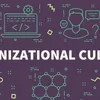Here’s how to ensure resilience amongst the human resource during COVID-19
As COVID-19 forces people to stay at home, isolation, emotional distress, as well as the fear of losing one’s job, loved ones, and more, this is the time for companies to step up and help its human resource feel stronger.

There is so much negativity surrounding us with our inevitable resignation to the fact that everything is down in the dumps and so are we. Some days at the workstation are dark and gloomy, and with all of us now stuck at home due to COVID-19, they have become even more so.
The long periods of isolation, the loss of loved ones, the loss of jobs, financial insecurity, the daily stress, now coupled with the emotional distress many of us are experiencing is pushing down the human resources. But an organisation and its human resource can come out of it stronger than before. Here’s how.
Plan for business continuity
Human resources are like natural resources; they're often buried deep. You have to go looking for them, they're not just lying around on the surface.
In these fraught times, most of us find that it’s quite challenging to think or plan about the business in the long-term. Yet the benefits of doing are not only self-evident, but it is also likely critical at this moment to successfully navigate the challenging journey that now lies ahead of us. One of the most important topics to address in this new reality is how to provide a healthy and effective workplace for our workers.
We are now likely at the end of the beginning of the pandemic. As businesses start to open up, the first major wave of return to work (RTW) protocols has now been released by various regional governments. They give us a detailed sense of the issues and capabilities — that we’ll need to begin putting in place to begin transitioning to what will become our next situational phase of work.
Just as importantly, such views also give us a reading on what we must consider embarking on the process of determining what the new long-term future of our employee experiences will be.
What lies ahead?
A little digging and my interactions with CHROs of different organisations resulted in the finding that as little as a quarter of workers are willing to resume working in a physical office post-COVID-19. This has major ramifications, not the least that this means that most organisations will need to provide a remote-first employee experience for the foreseeable future.
Second, both businesses and workers are not in their best shape. One needs to focus on wellness and taking the care of the fundamentals when it comes to healthy workers, both physically and psychologically.
So too with the business, to ensure it recovers and is better adapted to transformed markets, different demands, and new operational challenges.
While this future is still very uncertain, given the continuing changes in the world, some key elements are abundantly clear: We won’t return to the physical workplace that existed pre-COVID-19.
Nor will we be staying in our present digitally remote environment in its current state, given its apparent shortcomings, especially not when an entire organisation now has to run mostly virtual. In this case, the mental health of your human resource needs to be handled with care.
Focus on mental wellbeing
You'd imagine that if you love something hard enough, put in the hours, the work — you'd finally get the hang of it and feel like you belong?
But hey, self-worth is a funny thing. I remember even as a kid, sometimes a blank piece of paper was so crippling to me that I'd momentarily forget how to draw, well even now I am faced with the same. I see my son scribbling on his iPad and I try to do the same on my Surface but "nada", I'm blank.
At a very young age, we start attaching our self-worth to how we perform at the things we are good at or people think we are good at.
We work hard, get better but in our pursuits towards achieving that perfection, we lose context. And the blocks, the toxic self-doubt begins to take a toll.
The post-pandemic human resource resilience shall focus mostly on the digital workplace. This will be the best way HR can ensure that their staff remains resilient and ready to get back onto the battleground.
So much as already happened this year when it comes to employee experience, from the dramatic and sudden shift to remote work in March to a much greater focus on employee wellbeing and health subsequently, among a whole host of rapid and disruptive new shifts.
This model merges IT, HR, communications, and everyone else into a single view for the first time. If experience is at the core of employee experience (EX), it should be the organising principle. Automation, analytics, current and coming revolutions in digital experience, consumer-grade user interfaces, low/no-code, and the emerging tech spectrum must regularly inform and improve the employee experience
The daily moments of the worker must be the unit of employee experience development and management.
No view of employee experience could be truly novel of course, as many in the industry have identified or created so many pieces of what I lay here. We’re all building on the shoulders of giants.
What’s different, I would suggest, is a truly holistic and inclusive approach that has the highest chance to be successful at addressing the largely accidental, disjointed, overly complex, and sprawling employee experience that most of us have built up over the years.
Edited by Saheli Sen Gupta
(Disclaimer: The views and opinions expressed in this article are those of the author and do not necessarily reflect the views of YourStory.)









